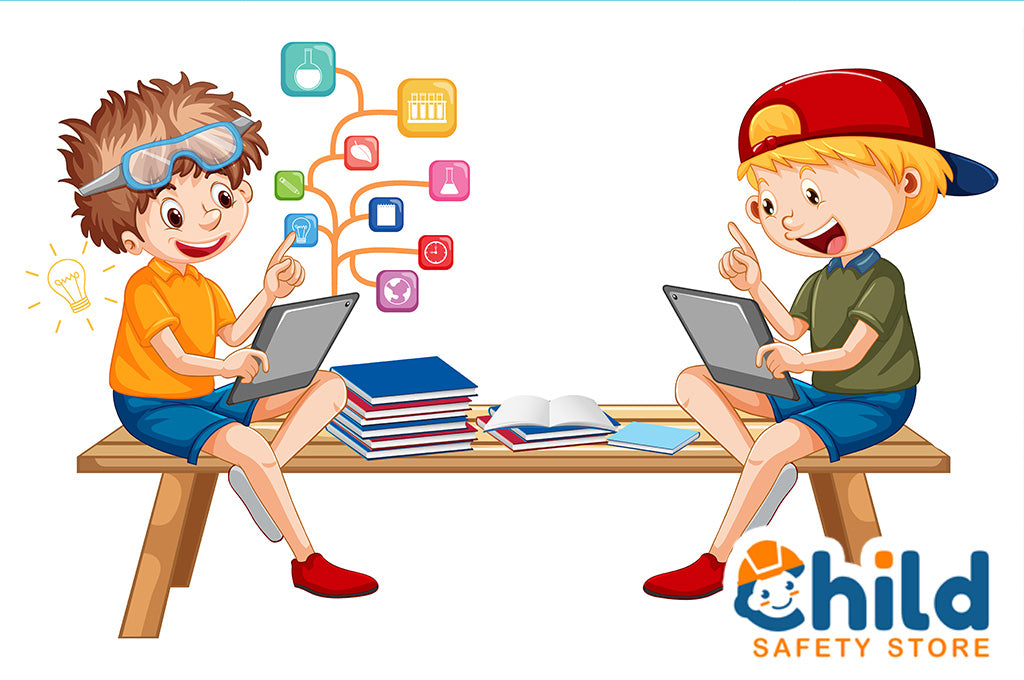
When to Introduce a Tablet for Your Child
Do you know when to introduce a tablet for you child? When it comes to screen time and kids, it can be a tricky situation. That said, it is hard to deny that in our digital world… technology is inescapable. No one wants their child to be left behind. This leads to a lot of parents wondering when to bring a tablet into their child’s life.
Introducing a Tablet for Your Child: A Delicate Balancing Act
Before we begin, let's take a moment to understand our modern digital landscape. Screens are everywhere and, let's face it, they're not going away. The key is finding that sweet spot – a balance between embracing technology and ensuring your child's safety.

Knowing when to introduce a smartphone or tablet for your child can seem like a daunting task. Even when the device is just used for learning, it can be tricky. We get it – the struggle is real! Let's embark on this journey together and navigate the ins and outs of introducing your little one to the world of screens.
Understanding Experts’ Opinions on Screen Time
According to the American Academy of Pediatrics (AAP), children under the age of 18 months should avoid the use of screen media. For kids aged 18 to 24 months, limited screen time with high-quality programming is acceptable. This, of course, does not include video chatting with loved ones who live far away. Furthermore, parents should watch with them to help them understand what they're seeing.
As for those kids who are older than two years, the AAP recommends consistent limits on screen time, emphasizing the importance of quality content over quantity.
The Right Age: A Moving Target
Now that we discussed general screen time, let's address the burning question: When is the right age to buy a tablet for your child? The truth is, there's no one-size-fits-all answer. Every child is different, and their readiness for technology varies. However, for parents who are looking to take the plunge, most experts agree that introducing a tablet around the age of two or three is generally a good starting point. That said, always keep in mind that “less is more.”
The Why Behind the Wait
Why wait until your child’s toddler years? Well, there's a method to this madness. During the first few years of life, children's brains are rapidly developing, and real-world interactions play a crucial role in this process. Delaying the introduction of screens allows kids to master essential skills, like language and social interactions, before immersing them in the digital realm.
Choosing the Right Tablet
The next question is, which tablet is best for your child? When it comes to tablets for kids, there's a smorgasbord of options available. We’re not going to recommend a brand, but we when it comes to introducing a tablet for your child, there are several elements to consider. Look for devices specifically designed for children, with robust parental controls and age-appropriate content.
Setting Boundaries
Congratulations! You've got the tablet, and your child is ready to embark on this digital adventure. Now it's time to establish some ground rules. Create a daily screen time limit, encourage breaks for physical activity, and always monitor the content your child is accessing. Setting boundaries from the start helps to instill a healthy relationship with technology.
The Power of Parental Controls
The Internet is a dangerous place. Always be sure to keep tabs on your kids. Parental controls are your secret weapon in the battle for providing a safe digital environment. Use these controls to restrict access to inappropriate content, set time limits, and even monitor your child's online activity. Stay in control while allowing your child to explore the digital world within safe boundaries.
Real-World Experiences Matter
While tablets can be powerful educational tools, it's crucial to balance screen time with real-world experiences. Last week, we discussed the educational benefits of winter nature walks. This is a reminder that there are tons of ways to experience the world that don’t require a screen. Engage in activities that stimulate creativity, encourage outdoor play, and foster face-to-face interactions. A healthy mix of digital and real-world experiences is the recipe for a well-rounded child.

Remember, there's no rush when it comes to introducing a smartphone or tablet to your child. Every child develops at their own pace, and your role as a parent is to guide them through this digital journey with love, patience, and a keen eye on safety.
